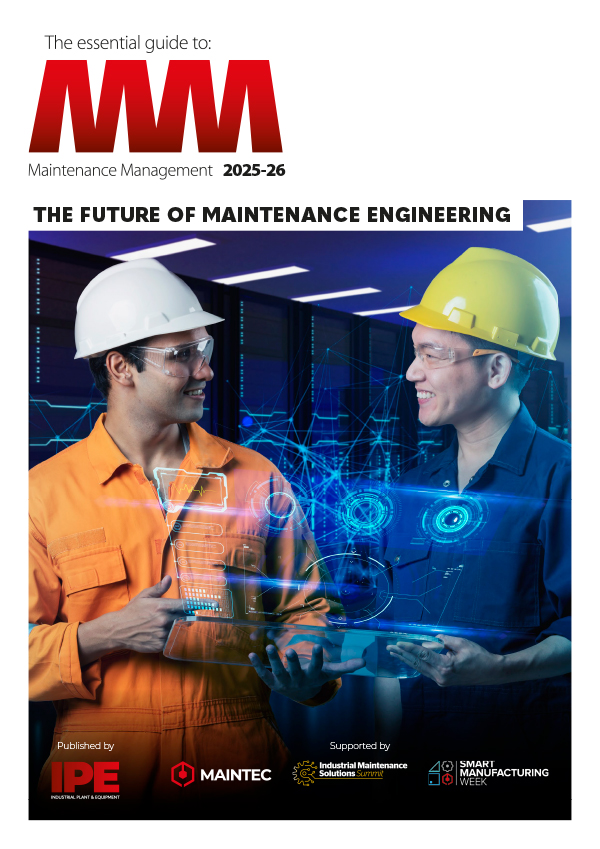

|
Edward Lowton
Editor |


|
| Home> | Production Engineering | >Materials | >Microscopy launches materials innovation for space |
Microscopy launches materials innovation for space
14 November 2025
MATERIALS DESTINED for space exploration encounter conditions even harsher than those faced in aviation. Extreme thermal cycling, high levels of radiation and the vacuum of space all present challenges that push component reliability to its limits. To guarantee performance in this unforgiving environment, engineers need detailed insights into material structure and composition. Here, Herman Lemmens, sales development director EMEA at Thermo Fisher Scientific examines three areas in which advanced microscopy techniques are helping researchers to evaluate material performance for space applications.

Preparing for extreme conditions
The space environment introduces degradation pathways that are rarely encountered in terrestrial applications. Metallic alloys may suffer from radiation-induced defect clusters or grain boundary embrittlement, while composites can delaminate under repeated thermal cycling between +150°C in direct sunlight and –150°C in eclipse. Thermal protection systems on re-entry vehicles face ablation and oxidation, while atomic oxygen erodes polymer-based surfaces in low Earth orbit.
To understand how radiation, vacuum and extreme temperature fluctuations impact spacecraft materials, engineers need tools that can reveal changes from the nanoscale to the microscale. Advanced microscopy provides exactly that capability.
Scanning electron microscopy (SEM) provides surface imaging and elemental analysis of corrosion pits or fracture features, while transmission electron microscopy (TEM) resolves dislocation structures and irradiation-induced voids at the nanoscale. Three-dimensional imaging using plasma focused ion beam SEM (PFIB-SEM) further reveals sub-surface crack propagation and porosity distribution, both critical to understanding fatigue performance.
The Thermo Scientific Helios 5 PFIB DualBeam is well suited to this type of large-volume characterisation. Its high-current plasma source enables rapid sectioning of bulk materials while preserving nanometre-scale detail, making it possible to reconstruct features in three dimensions. These capabilities provide engineers with a more complete picture of degradation mechanisms in spacecraft alloys and composites.
Industry standards such as NASA’s MSFC-SPEC-522 for material characterisation and European Space Agency’s (ESA) ECSS-Q-ST-70 for materials and processes increasingly call for microstructural evaluation during qualification. Microscopy therefore serves as both a diagnostic and predictive tool, informing not just failure analysis but also preventative design.
Verifying additive manufacturing
Additive manufacturing (AM) has become a cornerstone of modern aerospace and its advantages for spaceflight are especially compelling. Lightweight lattice structures, consolidated part geometries and even the possibility of in-orbit printing promise to reduce launch mass and supply chain complexity.
Yet AM introduces its own microstructural risks, including porosity, unmelted powder residues and anisotropy in grain growth - where grains align in preferred directions during the layer-by-layer build. These features can create weak points and reduce fatigue resistance, undermining the reliability of components.
For flight hardware certified under standards such as NASA-STD-6030 for AM parts, verifying material integrity is essential. Here, correlative microscopy offers unmatched insight.
A sample workflow might include SEM with energy-dispersive X-ray spectroscopy (EDS) mapping to detect inclusions or foreign particles embedded in a build. Electron backscatter diffraction (EBSD) could then be used to reveal grain texture variations that influence mechanical anisotropy.
The Thermo Scientific Apreo ChemiSEM System supports this workflow by integrating imaging and elemental analysis in a single instrument. Engineers can move seamlessly between high-resolution surface imaging, chemical mapping and crystallographic analysis, enabling faster data collection and streamlined decision-making during qualification and materials research.
Protecting spacecraft with advanced coatings
Protective coatings are a vital part of space systems, either as thermal barrier coatings (TBCs) for engines, erosion-resistant layers on satellite surfaces or radiation protection multilayers in deep space missions. The behaviour of protective coatings is not only based on bulk chemistry but also microstructural details such as porosity, adhesion at the interface and phase distribution in multiple layers.
Microscopy provides a direct way to quantify and optimise these properties. Take ceramic TBCs, for example. Using cross-sectional SEM imaging and EDS mapping, engineers can visualise how stabilising elements such as yttrium, zirconium or magnesium are distributed in the TBC. An even distribution of these elements contributes to better thermal resistance and oxidation protection.
EBSD adds another layer of insight by revealing crystallographic orientation and phase differences across the coating. These maps can highlight mismatches between layers or within grains that create stress concentrations likely to lead to spallation — the cracking and flaking of coating material during repeated thermal cycling.
By correlating these findings with environmental testing, engineers can iteratively refine deposition parameters, whether for plasma spraying, chemical vapor deposition or newer additive coating processes. This approach not only ensures compliance with aerospace standards but also extends component lifetimes, directly reducing launch costs and mission risk.
Advanced microscopy is proving to be an indispensable tool in the quest for reliable, high-performance materials for space exploration. Techniques such as SEM, TEM, PFIB, EDS and EBSD enable engineers to characterise degradation mechanisms, verify additive manufacturing quality and optimise protective coatings from the microscale to the nanoscale. These insights not only support compliance with rigorous aerospace standards but also drive innovation, helping design lighter, stronger and longer-lasting spacecraft components.
To find out more about how microscopy could support your materials research for space applications, visit Thermo Fisher Scientific at Space Tech Expo on 18-20 November at stand 11.
- No related articles listed

















